The Anti-Costa: Why Your Next Spanish Trip Should Be to Costa de la Luz
Friday, December 5, 2025
If the phrase "Spanish Costa" conjures images of high-rise hotels, neon-lit strips, and crowded beaches, it is time to reset your expectations. Hidden in plain sight on Andalusia’s Atlantic coast lies the Costa de la Luz (Coast of Light).
Stretching 120 miles from the tip of majestic Tarifa (where you can almost touch Africa) to the Portuguese border, this region offers a version of Spain that feels almost lost to time: wild, windswept, and unapologetically authentic.

The Vibe: Wild and Untamed
Unlike its Mediterranean cousins (the Costa del Sol or Costa Blanca), the Costa de la Luz faces the open Atlantic. The ocean currents are cooler, the winds are stronger, and the landscape is greener.
This geography has saved it from mass overdevelopment. Instead of concrete sprawls, you’ll find rolling sand dunes, pine forests, and vast stretches of golden sand. It is a favourite holiday spot for Spaniards themselves—a sure sign of quality—where "luxury" means understated heritage hotels rather than all-inclusive resorts.
The Hilltop Gem: Vejer de la Frontera
The region is dotted with pueblos blancos (white villages), but Vejer de la Frontera is the crown jewel. Perched high on a hill, its whitewashed houses glow pink and gold during the legendary sunsets that give the "Coast of Light" its name.
-
What to do: Wander the labyrinthine alleyways that reflect the town's Moorish past. Start your morning with coffee in the Plaza de España, watching the town wake up to the sound of sparrows in the orange trees.
-
The landscape: From Vejer, you can look down over the coastal plains. A short hike through the wildflower-filled La Breña y Marismas del Barbate Natural Park will take you down to the shore.
The Coast: Surf and Solitude
The beaches here are not for passive sunbed lounging; they are wild, elemental places. Near the fishing town of Conil de la Frontera, you won't find endless rows of umbrellas. Instead, you’ll see surfers scanning the Atlantic rolls and hikers exploring the dunes.
-
History in the Sand: Keep an eye out for the Tower of Castilnovo on the beach. This solitary stone structure is the last survivor of a fortress destroyed by the tsunami from the 1755 Lisbon earthquake. Today, it stands as a dramatic, "Hitchcockian" landmark occupied only by nesting crows.
The Ancient City: Cádiz
Driving north, you reach Cádiz, an ancient city tethered to the mainland by a slender bridge. Often described as looking like a "gold bar" due to the way the sun hits its stone amidst the surrounding blue water, Cádiz claims to be the oldest continuously inhabited city in Western Europe.
The city reached its peak in the 18th century through trade with the Americas. This era left a unique architectural legacy: merchant watchtowers.
-
Where to Stay: For a taste of this history, look for the Hotel Casa de las Cuatro Torres. Built for a merchant in the 1700s, it retains its original watchtowers (once used to spot incoming ships) and features extravagantly high ceilings with exposed timber from old shipwrecks.
Why Go Now?
The Costa de la Luz offers a rare combination in modern European travel: accessibility and authenticity. It is a place where the "nightlife" is a long dinner in a town square rather than a club, and the "attractions" are the light, the wind, and the history beneath your feet.
 3
Like
Published at 5:55 PM Comments (0)
3
Like
Published at 5:55 PM Comments (0)
Spain's Tallest Cathedral
Wednesday, November 26, 2025
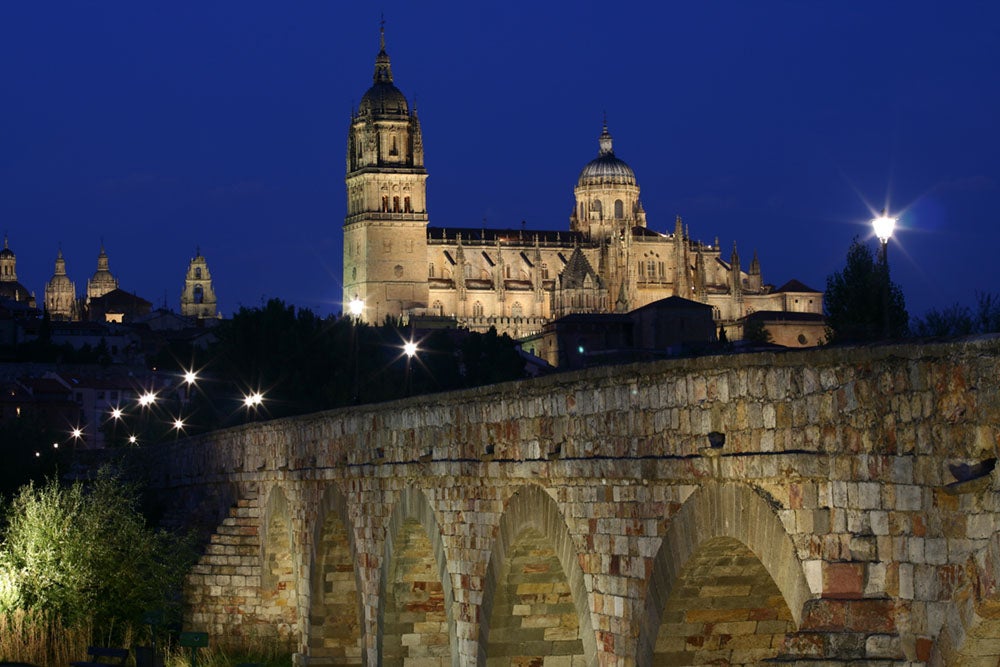
The ranking could be defined as close. In fact, only six meters separate the tower of the New Cathedral of Salamanca from the emblematic Giralda of Seville. With its 110 meters, this construction rises above the sky of the Castilian and Leonese city, allowing it not only to lead the classification of religious temples but also that of any building in this city.
Built between the 16th and 18th centuries, this cathedral used part of the structures of the previous basilica to achieve these amazing dimensions. In fact, the bell tower was built on top of the old tower, rising to this height at the end of the works.
However, the Lisbon earthquake of 1755 damaged part of its structure, forcing the deviation caused by the tremor to be tightened and reinforced with a stone embankment, widening what was destined to be a slender tower.
This is a recommended visit if you happen to be travelling through the region, quite a spectacular cathedral.



 2
Like
Published at 7:53 PM Comments (0)
2
Like
Published at 7:53 PM Comments (0)
Where to play golf all year round in the sun...
Friday, November 7, 2025
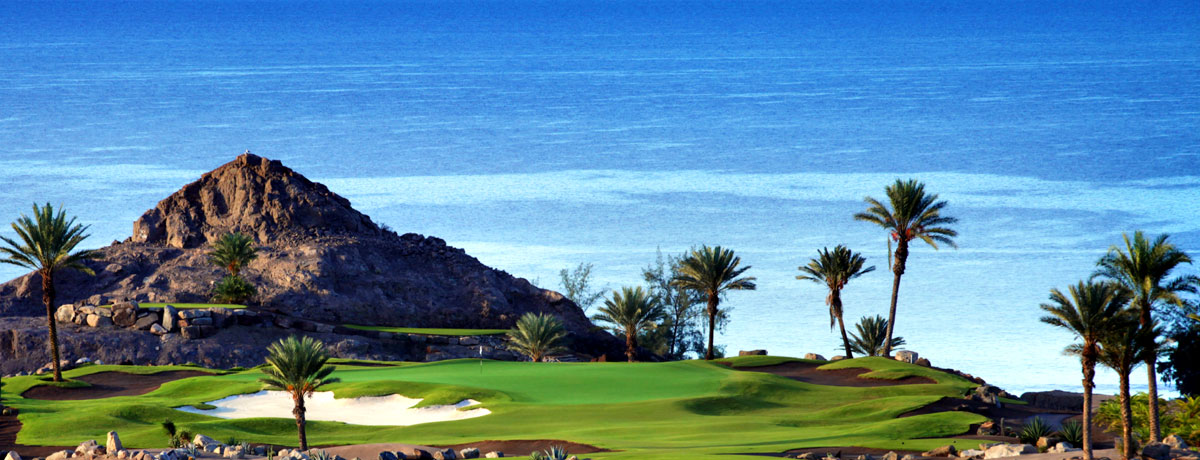
Would you like to play golf at any time of the year, enjoying springtime temperatures and a pleasant sea breeze? You can, in the Canary Islands: a veritable paradise for golf lovers, close to the beach and offering excellent services.
In the Canary Islands, you are sure to enjoy an ideal holiday playing golf. Many reasons make it possible: a privileged climate that enables you to play golf 365 days a year; spectacular, varied scenery including exceptional volcanic landscapes, beaches, mountains and nature reserves; first-class infrastructure for services and leisure to satisfy every need and offering magnificent value for money; and, of course, an excellent variety of golf courses. Most courses are to be found on Tenerife and Gran Canaria, but there are also excellent fairways on the islands of Fuerteventura, Lanzarote and La Gomera. There is no doubt about it: any time of the year is ideal for playing your favourite sport in the Canary Islands, where you can enjoy some truly extraordinary conditions.

Another attraction of playing golf in the Canary Islands is that you can try out different courses by simply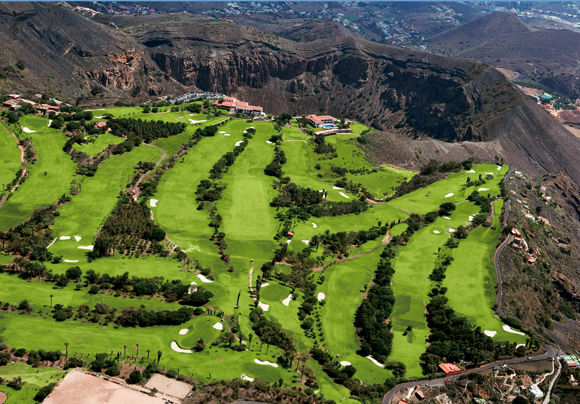 making short trips around the islands without having to change accommodation. Wherever you go, you will find top quality, modern facilities with all the necessary conveniences. Fun, original courses dotted with bunkers of black, volcanic sand and surrounded by unique indigenous vegetation await you on the islands. You are sure to have fun overcoming the challenges they pose while admiring the fabulous views over the Atlantic ocean or the magnificent mountains that dominate the archipelago. making short trips around the islands without having to change accommodation. Wherever you go, you will find top quality, modern facilities with all the necessary conveniences. Fun, original courses dotted with bunkers of black, volcanic sand and surrounded by unique indigenous vegetation await you on the islands. You are sure to have fun overcoming the challenges they pose while admiring the fabulous views over the Atlantic ocean or the magnificent mountains that dominate the archipelago.
You will find courses to suit all tastes, ideal for both professional players and those who wish to improve their skill: from golf clubs that are venues for major PGA tournaments, such as the Tenerife Ladies Open, to courses for beginners or improving your game in a friendly, quiet atmosphere.
One of the clearest indications that the islands are perfect for golf is the abundance of available space: as well as the existing courses, many more are planned or are already being built and expected to be opened shortly.
http://www.federacioncanariagolf.com
 2
Like
Published at 8:33 PM Comments (0)
2
Like
Published at 8:33 PM Comments (0)
The Rebirth of Spanish Grand Rail Travel and Wine Tourism
Friday, October 24, 2025
The launch of the luxury wine train, the 'Al Andalus,' represents more than just a new travel option; it signals a significant commitment by Spain to capitalise on the booming high-end experiential travel market, specifically by linking it to the nation's profound wine culture.
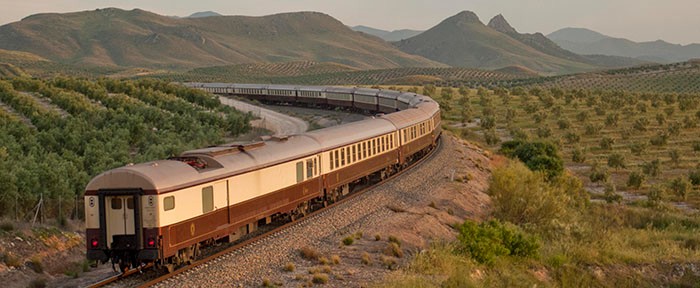
A Moving Piece of History: The 1929 'Al Andalus'
The choice of the 'Al Andalus' train, originally dating back to 1929, is central to the experience. This is not modern luxury, but rather an evocation of the golden age of rail travel. The meticulous restoration focuses on preserving the train’s historical integrity while integrating essential modern comfort. The presence of Art Deco detailing and polished mahogany panelling isn't just decor—it’s a carefully curated environment designed to transport guests into a time of romantic, slower-paced travel where the journey itself was the destination. This 'heritage luxury' niche is highly sought after by affluent travellers looking for authentic experiences that disconnect them from the modern rush. The addition of amenities like queen-size beds and full en-suite bathrooms with showers is the non-negotiable modern concession that transforms the vintage cabin into a true, high-comfort hotel suite on rails.
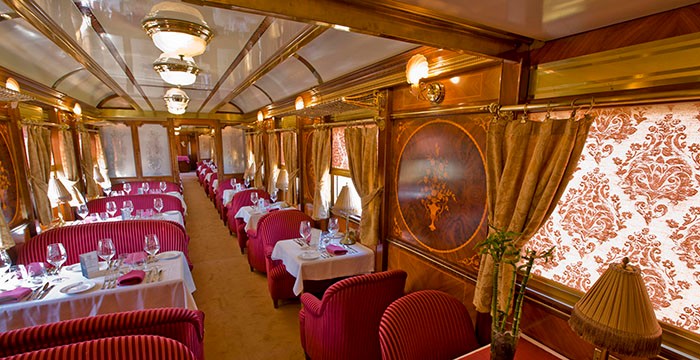
The Strategic Route: Unlocking Spain's Wine Diversity
The seven-day itinerary from Madrid to Seville is strategically designed to be a condensed masterclass in Spanish terroir and history.
-
Castilla-La Mancha: The journey begins by passing through the vast plains of this region, which holds the title of the world's largest area under vine. This provides a crucial context for understanding the scale of Spanish winemaking.
-
Extremadura: A lesser-known but increasingly relevant wine region, offering guests an off-the-beaten-path perspective and opportunities to discover emerging Spanish wine styles.
-
Andalusia: The route culminates in the south, the spiritual home of Sherry. The inclusion of stops like Cádiz and Seville places guests in the heart of this sun-drenched region, allowing them to fully appreciate the culture behind Spain’s most famous fortified wine.
The excursions—including visits to boutique vineyards and artisan workshops—are key to justifying the premium price point. They ensure the trip is not merely scenic but genuinely educational, allowing guests to meet the producers and understand the history of the regions they traverse.

The culinary offering solidifies 'Al Andalus' as a wine train. The rotating regional menus are crafted to sync with the train’s location, creating a seamless connection between the plate, the glass, and the landscape outside. The sommelier’s role goes beyond service; they are the curator of this edible narrative, selecting wines and Sherries that perfectly complement regional delicacies like Jabugo ham and oxtail stew. This high-level gastronomic integration ensures that food and wine are not simply served, but are the central, binding theme of the entire seven-day cultural immersion.
Starting at €6,600 per person, the train is aimed squarely at the top-tier luxury market, offering an all-inclusive, fully guided, and utterly unique way to experience the cultural and vinous heart of Spain, positioning the 'Al Andalus' as one of Europe's premier railway journeys upon its April 2026 launch.
 2
Like
Published at 9:14 PM Comments (0)
2
Like
Published at 9:14 PM Comments (0)
How Spain Quietly Became Europe's Culinary Superpower
Friday, October 17, 2025
For decades, the global spotlight on fine dining often rotated between the rich classical traditions of France and the experimental frontiers of New Nordic cuisine. Yet, a quiet culinary revolution has been brewing on the Iberian Peninsula, culminating in Spain’s undeniable ascent to the top of the world's gastronomic charts.
Spain is no longer just a contender—it is the dominant force. The recent results from prestigious rankings like The World's 50 Best Restaurants, where a small country has secured multiple spots in the very top tier (including the number one spot, held by Barcelona’s Disfrutar), confirm what many food lovers already knew: Spain is, arguably, the "foodiest" country in Europe.

How did this happen? The country's dominance is not a fleeting trend, but rather a "perfect storm" fueled by a powerful combination of visionary innovation, unwavering reverence for its world-class ingredients, and an intensely democratic food culture.
1. The Avant-Garde Legacy: From El Bulli to Disfrutar
The foundation of modern Spanish culinary dominance was poured decades ago. In the 1970s, the Nueva Cocina Vasca movement, spearheaded by chefs like Juan Mari Arzak and Pedro Subijana, championed a fusion of traditional Basque cooking with creativity and modern flair, putting Spain on the haute cuisine map.
This set the stage for the global phenomenon of Ferrán Adrià's El Bulli. Until its closure in 2011, El Bulli shattered the rules of cooking, pioneering techniques like spherification and foams that are now standard in high-end kitchens worldwide.
The current world champion, Disfrutar in Barcelona, is a direct heir to this legacy. Led by El Bulli veterans Oriol Castro, Mateu Casañas, and Eduard Xatruch, Disfrutar continues to push the boundaries, serving tasting menus of over 30 dishes that seamlessly blend culinary art and science. As Chef Ángel León of the three-star Aponiente notes, Spanish chefs "are veterans," not positioning themselves according to passing fads.
The Iconic Dishes That Defined Modern Cuisine
The global impact of Spanish cuisine can be measured not just in awards, but in the specific creations that became worldwide sensations and inspirations:
-
The Liquid Olive (El Bulli, Ferrán Adrià): The single most iconic dish of the molecular gastronomy era. This perfect, jewel-like sphere of olive juice, coated in a delicate membrane through the process of spherification, burst on the palate with the intense, pure flavor of an olive. It was a revolutionary moment that demonstrated the potential of culinary science to manipulate texture and surprise the diner.
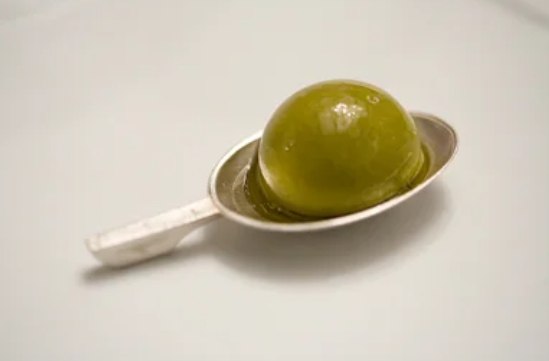
-
Marinas / Plankton Creations (Aponiente, Ángel León): Known as the "Chef of the Sea," Ángel León made his name by fearlessly exploring the ocean's depths. His signature ingredient is marine plankton, which he introduced to haute cuisine. Dishes like his Plankton Rice give a deep, ethereal taste of the sea, highlighting his work in creating a sustainable, blue gastronomy.

-
Spherified Caviar and Foams (Disfrutar, Castro, Casañas, Xatruch): Disfrutar continues the avant-garde tradition, showcasing dishes that are visual and textural illusions. Examples include a spectacular Panchino Bun oozing Beluga caviar from a siphon, and a Tartine of Foie Gras garnished with bubbles of spherified corn. These dishes show that the core techniques of the Spanish revolution are still fertile ground for new and playful creations.

-
Whole Grilled Turbot (Elkano, Aitor Arregui): While seemingly simple, the mastery of the grill at Basque restaurants like Elkano is a profound culinary statement. The restaurant's signature dish is the Whole Grilled Turbot, cooked over coals on the bone, basted with an "injerto" (a mix of oil, vinegar, and the fish's own gelatin). The focus is not on invention, but on elevating the product to its absolute highest expression—a deceptive simplicity that requires immense skill.
2. The Power of Product and Place
While the avant-garde grabs the headlines, the soul of Spanish cuisine remains its unshakeable commitment to the highest quality, most diverse ingredients.
Spain’s incredible geographical diversity—with over 52 provinces—results in a vast pantry, from the legendary red tuna of Andalucía to the baby tear-shaped peas of Basque Country and the cave-aged blue cheeses of Asturias. This product-first philosophy is the bedrock of even the most acclaimed restaurants.
Take Asador Etxebarri (ranked No. 2 globally), a temple to grilling that elevates simple ingredients like prawns and turbot through a mastery of flame. Similarly, Elkano in Getaria, renowned for its whole grilled turbot, exemplifies the sophistication of tradition. As one chef described it, the country’s success is a balancing act: "Haute cuisine restaurants like Disfrutar apply all the creativity imaginable," while traditional spots like Etxebarri and Elkano are "also very sophisticated in their own way."
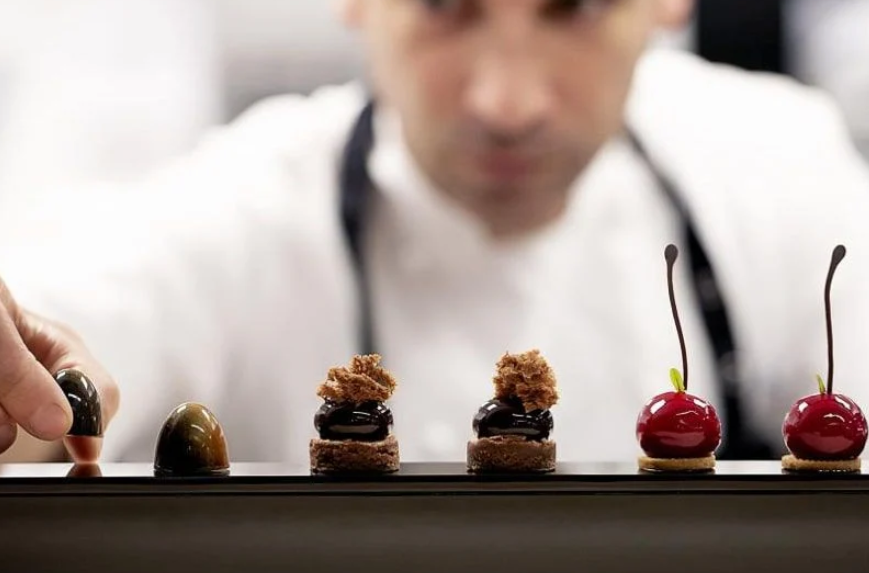
3. The High-Low Revolution
Perhaps the most compelling argument for Spain as the "foodiest" country is the accessibility and quality of its everyday dining. Unlike fine-dining scenes in some other nations, Spain’s culinary excellence is not restricted to expensive tablecloth restaurants.
The country's food scene is a joyful blend of high-end experiences and affordable tapas bars. In Spain, the local culture goes hand-in-hand with food. Techniques pioneered by Adrià—like foams or spherifications—are often found in the small bites of a neighbourhood pintxo or tapas bar.
As Chef León put it, "The way of eating in Spain is a privilege. We have both fine dining restaurants and affordable tapas, not to mention excellent mid-range restaurants... that you can't find in other countries." Even the Michelin Guide recommends hundreds of Spanish restaurants where one can enjoy a meal for less than 40 euros.
This vibrant, pervasive quality is what makes Spain a food tourist destination—a remarkable 28% of the 84 million international tourists who visited in 2023 came specifically to eat.
From the dazzling molecular creations of Barcelona to the smoky perfection of a Basque grill, Spain is a country that reveres its past while fearlessly embracing its future. By balancing wild innovation with deep, regional tradition and making quality food a part of daily life, Spain has stopped whispering and is now roaring its culinary prowess for the world to hear.
 3
Like
Published at 10:43 PM Comments (0)
3
Like
Published at 10:43 PM Comments (0)
The Murcian Marinera: A Tapas Icon Born of the Sea and Land
Saturday, October 11, 2025
The bustling tapas bars of Murcia, a sun-drenched region in southeastern Spain, offer a dazzling array of small bites, but few are as iconic and beloved as the "Marinera." This seemingly simple tapa, a perfect marriage of crisp bread, creamy salad, and a salty anchovy, tells a story of the region's culinary heritage, where the bounty of the Mediterranean Sea meets the richness of the huerta (fertile agricultural land).
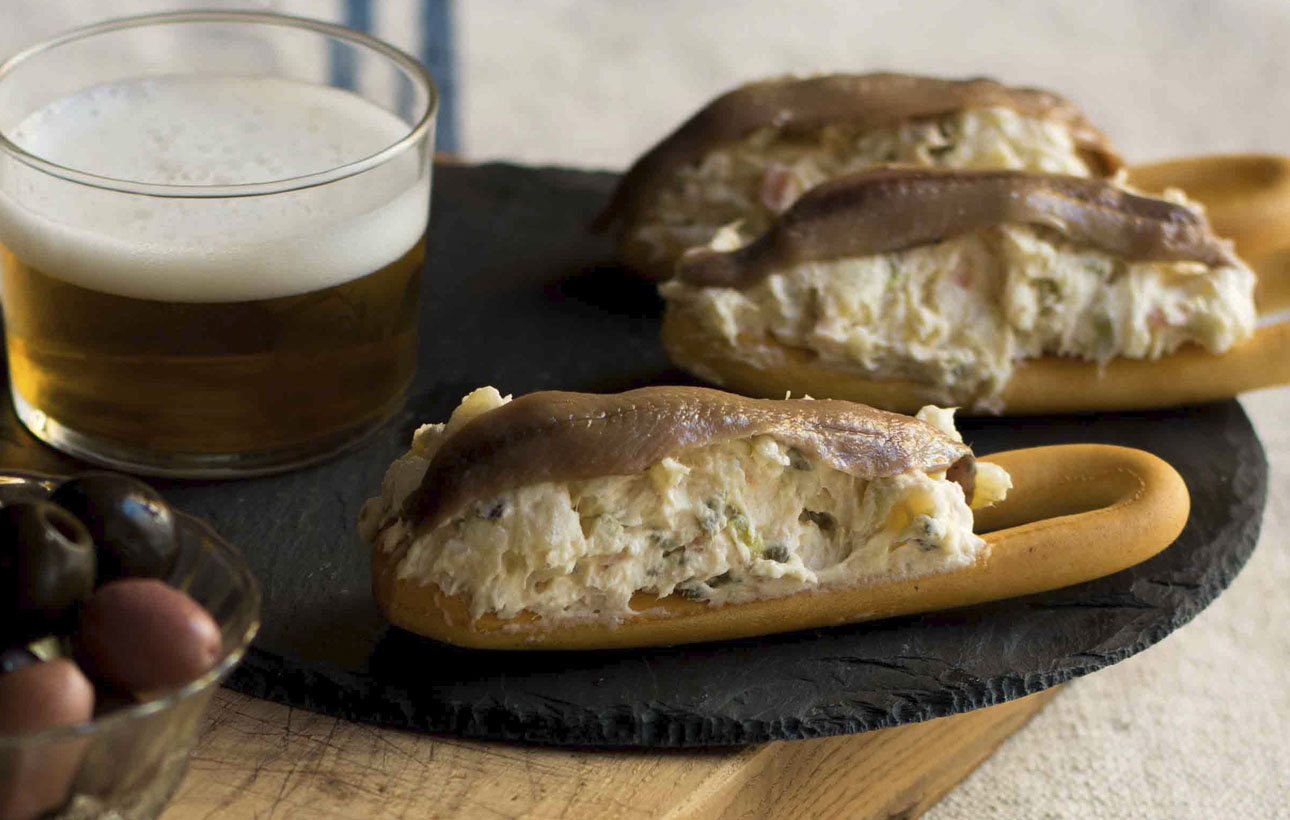
The exact origin of the Marinera is shrouded in the mists of time, but its components suggest a long-standing culinary tradition. The base, often a "rosca" (a ring-shaped breadstick) or a simple slice of baguette, speaks to the Spanish love affair with bread. The heart of the Marinera, the ensaladilla rusa (Russian salad), is a staple across Spain, a testament to its widespread popularity since its introduction in the 19th century. But it's the anchovy, often a local salazón (salt-cured fish), that firmly anchors the Marinera to Murcia's coastal identity.
Legend has it that the Marinera evolved from the humble necessity of utilising available ingredients. Fishermen and farmers, seeking a quick and satisfying bite, combined the ever-present bread with a spoonful of the popular Russian salad and topped it with a prized anchovy. The name "Marinera," meaning "seawoman" or "mariner," further reinforces its connection to the sea and the coastal communities that likely perfected this delightful combination.
Over time, what began as a practical snack evolved into a culinary institution. Today, no visit to Murcia is complete without indulging in a Marinera, often paired with a refreshing "caña" (small glass of beer) or a crisp local wine. It's a tapa that embodies the spirit of Murcian cuisine: fresh, flavorful, and deeply satisfying.
Crafting Your Own Marinera: A Taste of Murcia at Home
While enjoying a Marinera in its native setting is an experience, recreating this Murcian classic at home is surprisingly straightforward. The beauty lies in the quality of the ingredients and the simplicity of its assembly.
The Three Pillars of a Perfect Marinera:
The Base: Traditionally, a "rosca" is used – a light, crunchy, ring-shaped breadstick. If you can't find roscas, a good-quality baguette or even plain breadsticks will suffice. The key is a crisp base that can support the salad without becoming soggy.
Ensaladilla Rusa (Russian Salad): This creamy potato salad is the heart of the Marinera. While variations exist, the classic Murcian ensaladilla is typically made with potatoes, carrots, peas, and mayonnaise.
The Anchovy: This is where the Marinera gets its distinctive salty kick. High-quality anchovies, preferably from the Cantabrian Sea or local Murcian salazones, are essential. Look for plump, firm fillets packed in olive oil.

Recipe: Authentic Murcian Marinera
Yields: 12-15 tapas Prep time: 20 minutes Cook time: 15-20 minutes
Ingredients:
For the Ensaladilla Rusa:
2 large potatoes, peeled and diced into 1/2-inch cubes
1 large carrot, peeled and diced into small cubes
1/2 cup fresh or frozen peas
1/2 cup good-quality mayonnaise (homemade is ideal, but store-bought is fine)
Salt and freshly ground black pepper to taste
Optional: 1 hard-boiled egg, finely chopped; 1/4 cup canned tuna in olive oil, drained and flaked.
For Assembly:
1 package of "roscas" (Murcian ring-shaped breadsticks) or 1 baguette, sliced into 1/2-inch rounds
1 jar (about 12-15 fillets) high-quality anchovies in olive oil, drained
Optional garnish: A sprig of fresh parsley or a slice of pimiento (roasted red pepper).
Instructions:
1. Prepare the Ensaladilla Rusa:
Cook the vegetables: In a large pot, bring salted water to a boil. Add the diced potatoes and cook for about 10-12 minutes, or until fork-tender but not mushy.
Add carrots and peas: During the last 5 minutes of cooking the potatoes, add the diced carrots and peas to the pot. Cook until all vegetables are tender.
Drain and cool: Drain the vegetables thoroughly and spread them out on a plate to cool completely. This is crucial; warm vegetables will break down the mayonnaise.
Combine and season: Once the vegetables are cool, transfer them to a medium bowl. Gently fold in the mayonnaise.
If using: Add the chopped hard-boiled egg and flaked tuna now.
Taste and season: Add salt and pepper to taste. Be mindful of the salt, as the anchovy will add more salinity. Cover and refrigerate for at least 30 minutes to allow the flavours to meld.
2. Assemble the Marineras:
Prepare your base: Arrange the roscas or baguette slices on a serving platter.
Spoon the ensaladilla: Take a generous spoonful of the chilled ensaladilla rusa and place it on top of each rosca or baguette slice. Form a small mound.
Top with anchovy: Carefully place one drained anchovy fillet on top of the ensaladilla, curving it slightly to fit the shape of the tapa.
Garnish (optional): If desired, add a tiny sprig of fresh parsley or a small piece of roasted red pepper for colour and a touch of freshness.
Serving Suggestion:
Serve your homemade Marineras immediately, ideally with a cold beer, a glass of chilled white wine, or a local Murcian vermouth. The contrast of the crunchy base, creamy salad, and salty anchovy is what makes this tapa so utterly irresistible.
The Murcian Marinera is more than just a snack; it's a culinary emblem, a perfect representation of a region that cherishes its simple, yet profoundly delicious, gastronomic traditions. Enjoy!
 3
Like
Published at 11:21 AM Comments (1)
3
Like
Published at 11:21 AM Comments (1)
Four Cities Ranked Among Europe's Most Beautiful
Friday, October 3, 2025
Spain has cemented its reputation as a leading destination for beauty, culture, and charm, with four of its cities making the prestigious ranking of the most beautiful in Europe, as compiled by the international travel, tourism, and lifestyle magazine Travel + Leisure. The ranking is based on a vote by nearly 180,000 readers who evaluated cities across the globe on their attractions, culture, gastronomy, friendliness, service, and overall value.
While Florence, Italy, secured the top spot in Europe with a remarkable score of 90.08 out of 100, Spanish cities dominated the runner-up positions, highlighting the country's enduring appeal.

The Andalusian Gems Claim the Podium
The top of the European list is marked by the stunning success of two Andalusian cities: Seville and Granada. These cultural powerhouses claimed the second and third places, respectively, confirming their status as must-visit European destinations.
Seville, with its stunning Alcázar, grand Gothic cathedral, and vibrant flamenco culture, scored an impressive 89.49 points
Granada, home to the magnificent Alhambra palace and the charming Albaicín neighbourhood, followed closely with a score of 89.48 points.

Madrid and Córdoba Complete the Quartet
Rounding out the Spanish representation are the nation's capital and another Andalusian treasure:
Madrid, a hub of art, history, and cosmopolitan energy, secured eighth place on the list with 88.02 points. The capital was praised for its world-class museums, lively squares, and excellent culinary scene.
Córdoba, with its breathtaking Mezquita-Cathedral and picturesque flower-filled patios, also made a strong appearance, earning 13th place with 87.22 points.
The strong showing of Seville, Granada, Madrid, and Córdoba underscores Spain's incredible diversity, offering visitors everything from imperial palaces and Moorish architecture to world-class modern museums and bustling city life, all underpinned by the country's renowned warmth and gastronomy.
The most beautiful cities in Europe
|
Rank
|
City
|
Country
|
Score (out of 100)
|
|
|
1
|
Florence
|
Italy
|
90.08
|
|
|
2
|
Seville
|
Spain
|
89.49
|
|
|
3
|
Granada
|
Spain
|
89.48
|
|
|
4
|
Istanbul
|
Turkey
|
89.47
|
|
|
5
|
Rome
|
Italy
|
88.91
|
|
|
6
|
Siena
|
Italy
|
88.33
|
|
|
7
|
Porto
|
Portugal
|
88.24
|
|
|
8
|
Madrid
|
Spain
|
88.02
|
|
|
9
|
Lisbon
|
Portugal
|
87.44
|
|
|
10
|
Lyon
|
France
|
87.43
|
|
|
11
|
Prague
|
Czech Republic
|
87.38
|
|
|
12
|
Salzburg
|
Austria
|
87.3
|
|
|
13
|
Córdoba
|
Spain
|
87.22
|
|
|
14
|
Athens
|
Greece
|
86.69
|
|
|
15
|
Aix-en-Provence
|
France
|
86.6
|
|
 3
Like
Published at 6:13 PM Comments (1)
3
Like
Published at 6:13 PM Comments (1)
Is This the Transport of the Future?
Friday, September 26, 2025
The Spanish capital, Madrid, is taking a major step into the future of urban mobility with the launch of its first-ever fully autonomous bus pilot project. Since September 15, an electric minibus manufactured and integrated in Spain has been circulating in the city's Casa de Campo park, offering passengers a glimpse of a driverless public transport system.

The test, a collaboration between the Municipal Transport Company (EMT) and the Automotive Technology Centre of Galicia (CTAG), is a key part of Madrid's European Mobility Week activities and is set to run until October 24.
The Pilot Program: Free, Electric, and Autonomous
The vehicle being tested is a small, 100% electric minibus with a capacity for 12 passengers. It operates on a free, circular route covering 1.8 kilometres with six stops, running from Monday to Friday between 12 p.m. and 5 p.m. The primary goal is to assess the performance of the vehicle's cutting-edge systems under real, open traffic conditions, navigating alongside cyclists, pedestrians, and other vehicles.
Despite its driverless nature, a safety operator is always on board. This is not only a regulatory requirement in Spain but also a safeguard, allowing an operator to monitor the journey and intervene in case of emergency, such as opening doors or manually braking.
A Made-in-Spain Brain
While autonomous vehicle components often come from various international suppliers, this project proudly features Spanish expertise. The assembly, software, and systems integration—the "brain" of the vehicle—were all developed by CTAG in Galicia.
The minibus operates at a high level of autonomy, Level 4, meaning it can handle nearly all driving situations independently. It uses an advanced array of sensors, cameras, and GPS to navigate, recognising:
- Roads and traffic lights.
- Cyclists and pedestrians.
- Any object, from a bicycle to an animal, reacts accordingly to avoid collisions.
EMT officials have expressed enthusiasm for the vehicle's dynamic behaviour, noting that the technology is "very well integrated" and does not behave "erratically or robotically."
The Future of Urban Mobility
This pilot goes beyond a simple technological demonstration. It serves as an exploration of how autonomous vehicles can complement and enhance existing public transport networks. While the lack of professional drivers is a growing problem in many parts of Europe, Madrid's focus is on improving safety and efficiency.
Experts believe these small, autonomous shuttles won't replace the large 12-meter city buses, but rather serve as a solution for specific public transport challenges. They are perfectly suited for:
- Short-distance routes (1-5 km).
- Operation in constrained areas like university campuses, industrial parks, or city centres, where large vehicles are impractical.
With cities across Europe, including Paris and Stockholm, also experimenting with autonomous mobility, the results of Madrid’s pilot will be crucial in determining the path forward. It appears the journey towards a smarter, more efficient public transport future is well underway.
 3
Like
Published at 9:43 PM Comments (0)
3
Like
Published at 9:43 PM Comments (0)
Cameras: Spain's Invisible Red-Light Enforcers
Friday, September 12, 2025
Spain is increasingly adopting a new type of 'invisible camera' known as 'foto-rojo' to automatically penalise drivers who run red lights. These systems are designed to be discreet, making them difficult for drivers to spot, and are part of a broader effort to improve urban road safety.

How They Work
These cameras are typically installed on poles or traffic light posts and are not designed to be conspicuous. Their presence is generally indicated by a vertical sign located 20-25 meters before the intersection. The system operates 24/7 and is only activated when the traffic light is red.
When a vehicle crosses the white stop line on a red light, the camera takes two photographs: one before the car enters the intersection and a second one after it has crossed. These images, along with the vehicle's license plate and other relevant data, are sent to a server. A mobility agent then reviews the case to verify the infraction.
Penalties and Legal Implications
If a red-light violation is confirmed, the driver faces a fine of 200 euros, which can be reduced by 50% if paid within the voluntary period. The offence also results in a deduction of 4 points from the driver's license. The citation is typically mailed to the vehicle owner, who is responsible for providing the identity of the driver at the time of the offence.
While these fines are automated, they can be appealed. According to legal experts, a significant number of fines are overturned by the courts due to procedural errors, technical deficiencies with the cameras, or a lack of solid evidence. Drivers can appeal a fine if the images are of poor quality, if the system's calibration is not up to date, or if the fine contains formal defects.
Location and Impact on Safety
These cameras are being installed by municipalities to reduce accidents in high-risk urban intersections, particularly those with a history of crashes involving pedestrians. They are already active in several major cities across Spain, including:
-
Madrid
-
Barcelona
-
Bilbao
-
Zaragoza
-
Valencia
-
Seville
The use of 'foto-rojo' systems is a key measure in Spain's road safety strategy, particularly in urban areas where distracted driving and a failure to follow traffic signals are significant factors in accidents. By automating the enforcement of red-light violations, authorities aim to reduce reckless behaviour and make city streets safer for all road users.
 1
Like
Published at 11:44 PM Comments (1)
1
Like
Published at 11:44 PM Comments (1)
"Dragon's Teeth" on Spanish Roads: What You Need to Know
Saturday, September 6, 2025
A new road marking, unofficially dubbed "dragon's teeth" (dientes de león), is appearing on Spanish roads and drivers should take note. These white triangles, painted along the edge of the lane, are a visual cue designed to slow down traffic and could result in a €200 fine for those who ignore them.
What Are They and What Do They Do?
 The triangles, officially classified as M-8.1 markings, are spaced about 1.5 meters apart and typically cover the 30 meters leading up to a built-up area. Their purpose is to create an optical illusion, making the road appear narrower than it is. This subconscious effect prompts drivers to reduce their speed without the need for physical speed bumps or rumble strips. The Dirección General de Tráfico (DGT) states that the goal is to reduce accidents in areas where fast-moving traffic meets vulnerable road users, such as pedestrians and cyclists. The triangles, officially classified as M-8.1 markings, are spaced about 1.5 meters apart and typically cover the 30 meters leading up to a built-up area. Their purpose is to create an optical illusion, making the road appear narrower than it is. This subconscious effect prompts drivers to reduce their speed without the need for physical speed bumps or rumble strips. The Dirección General de Tráfico (DGT) states that the goal is to reduce accidents in areas where fast-moving traffic meets vulnerable road users, such as pedestrians and cyclists.
Where You Will See Them
These markings are being implemented at the entry points of towns and villages, as well as near schools, hospitals, residential streets, and crossings—in essence, any location where drivers need to transition from open-road speeds to urban speeds. The DGT has been trialing the markings in various municipalities, with Nava de Roa (Burgos) being one of the first to adopt them. The use of these markings is spreading as local councils update their road paint.
The Rule and the Fine
The General Traffic Regulations specify that the M-8.1 marking indicates that drivers must "sensibly reduce" their speed and exercise extra caution. The practical instruction is clear: when you see the "dragon's teeth," ease your speed down to 30 km/h unless a different limit is posted. Drivers who fail to comply and continue at a higher speed risk an administrative fine of up to €200.
Tips for Drivers
To avoid a fine and drive safely in these areas, drivers should:
-
Spot the run-up: The triangles are placed well in advance of the first houses or junctions, so recognize them as an early warning sign.
-
Confirm the speed: Look for a speed limit sign or a painted '30' on the road surface as you enter the urban area.
-
Maintain a slow pace: The intent is not a quick brake but to maintain a steady speed of 30 km/h until signs indicate a change.
-
Be aware of people: These zones are chosen to protect children, pedestrians, and cyclists, so stay alert and be prepared to yield.
The "dragon's teeth" are part of a broader refresh of Spain's traffic signage and markings, aimed at improving road safety. For tourists and residents alike, understanding these simple but crucial markings is essential for safe driving and avoiding a fine.
 3
Like
Published at 6:54 AM Comments (0)
3
Like
Published at 6:54 AM Comments (0)
Spam post or Abuse? Please let us know
|
|